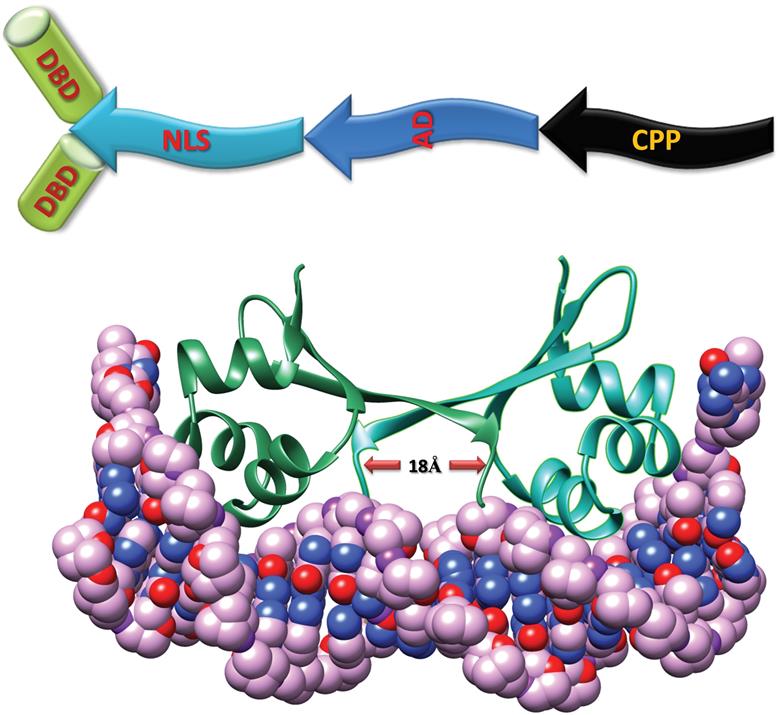Researchers in India have taken a step towards selective gene regulation by making a peptide-based artificial transcription factor that can upregulate a luciferase reporter gene in mammalian cells.1

Source: © Royal Society of Chemistry
Top: Schematic representation of the artificial transcription factor. DBD = DNA binding domain, NLS = nuclear localisation signal, AD = activationdomain, CPP = cell penetrating peptide. Bottom: The main DNA recognition motif is a pair of symmetry related helices inserted into the major groove of the target DNA.
Transcription factors are proteins that bind to specific DNA sequences and control gene expression by converting DNA to RNA. Since transcription factors are important for turning genes on or off, the researchers hope that artificial transcription factors could treat diseases by rebalancing perturbations in cellular pathways. Lead researcher, Siddhartha Roy, from the Bose Institute in Kolkata, says their work ‘is part of a continuing effort to develop small peptides that are deliverable inside the cell and can regulate – either inhibit or activate – the expression of specific genes.’
Read the full story by Fiona Tscherny on Chemistry World.
References
1 K Roy et al, Chem. Commun., 2018, DOI: 10.1039/c7cc09279b










